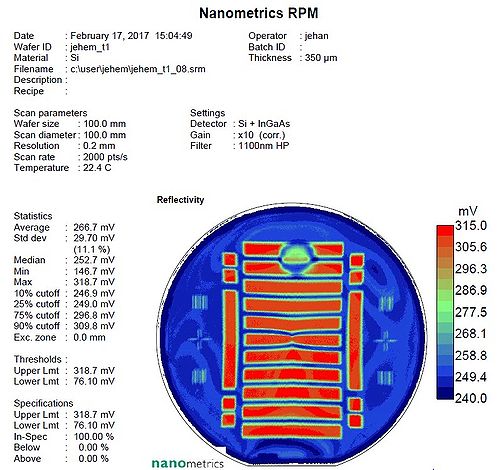Specific Process Knowledge/Characterization/PL mapper: Difference between revisions
No edit summary |
|||
| Line 1: | Line 1: | ||
'''Feedback to this page''': '''[mailto:danchipsupport@ | '''Feedback to this page''': '''[mailto:danchipsupport@Nanolab.dtu.dk?Subject=Feed%20back%20from%20page%20http://labadviser.Nanolab.dtu.dk/index.php?title=Specific_Process_Knowledge/III-V_Process/characterisation/PL_Mapper click here]''' | ||
==PhotoLuminescense Mapper RPM2000 == | ==PhotoLuminescense Mapper RPM2000 == | ||
| Line 12: | Line 12: | ||
'''The user manual and contact information can be found in LabManager:''' | '''The user manual and contact information can be found in LabManager:''' | ||
[http://www.labmanager | [http://www.labmanager.dtu.dk/function.php?module=Machine&view=view&mach=152 PL mapper] | ||
{| border="2" cellspacing="0" cellpadding="10" | {| border="2" cellspacing="0" cellpadding="10" | ||
| Line 62: | Line 62: | ||
|style="background:WhiteSmoke; color:black"| | |style="background:WhiteSmoke; color:black"| | ||
*Software (free) to view and re-analyse the maps and spectra can be found on Labmanager. | *Software (free) to view and re-analyse the maps and spectra can be found on Labmanager. | ||
*Direct link to file download [http://labmanager | *Direct link to file download [http://labmanager.dtu.dk/view_binary.php?fileId=832 RPM2000 analysis software]. | ||
*The software will request you to get a (free) license key from Nanometrics. | *The software will request you to get a (free) license key from Nanometrics. | ||
|} | |} | ||
Revision as of 13:46, 23 August 2019
Feedback to this page: click here
PhotoLuminescense Mapper RPM2000

Photoluminiscense mapping is a non-contact, non-destructive technique for mapping out uniformity of alloy composition, material quality and defects in substrates and of III-V epiwafers. The Rapid Photoluminiscense Mapper (RPM) is equipped with 3 lasers for PL measurements and a white-light source to map out thickness and reflectance of eg layers, microcavities and VCSELs.

It can also be used to map out voids after silicon wafer-bonding. This is done using the reflectance mapping and is using the fact that silicon is transparent for wavelengths above ~1000nm. A void will therefor change the reflectance in that wavelength range. See datasheet below (Thanks to Jens Hemmingsen for the data).
The user manual and contact information can be found in LabManager:
| Performance | Excitation |
|
|---|---|---|
| Detection |
| |
| Gratings |
| |
| Chuck sizes |
| |
| Resolution |
| |
| Wavelength accuracy |
| |
| Materials | Allowed substrate materials |
|
| Forbidden materials |
| |
| Software | RPM viewer |
|
